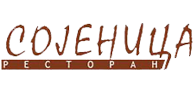Board Self-Assessment is a method to analyze and discuss governance strengths and weakness. It is a way for the board to step back and evaluate its own effectiveness, which in turn can lead to improvements in governance.
Time, planning and engagement of board members are required for a successful board evaluation process. The first step is to determine the scope of the assessment. This could include the entire board, specific committees, and/or individual directors. A well-designed plan will identify the evaluation methodology. Common methods include surveys, interviews or guided discussions. Once the scope of the evaluation as well as the method used have been decided the next step is to create and distribute questionnaires.
Some boards opt to conduct the evaluation in-house while others engage the help of a third-party consultant. A third-party consultant can ensure a thorough and impartial analysis, which is especially important when your board doesn’t have the time or resources to conduct the evaluation on their own.
It is important that board members review themselves. However, it is also important that nonprofit boards pay attention to the whole. It is easy for nonprofit boards and their evaluation facilitators to become absorbed in assessing the individual’s responses and neglect examining the board as a whole.
A successful self-assessment can help boards clarify their expectations for each other, reveal weaknesses Board Self-Assessment Checklist in the composition of their boards and align the expertise of the board with organizational strategy and address investor concerns regarding the diversity of boards and their turnover and also increase the effectiveness of board procedures and practices. In their proxy statements, public companies publish the results of their board’s evaluations.
